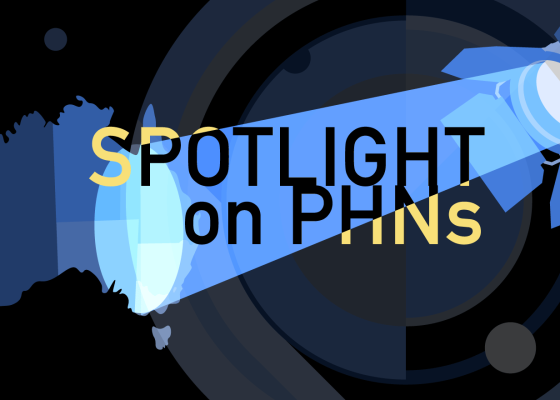Food supply insecurity, rising costs of fresh food and shrinking GP access are exacerbating an already big diabetes problem in this Queensland PHN.
Since 2021, 10 general practices, representing 6% of all practices in the North Queensland PHN catchment have closed, with seven local communities experiencing “significant market failure” where the local GP has closed or is at risk of closing.
Speaking before the federal government’s Inquiry into Diabetes in Australia, NQPHN’s executive director of health services commissioning Ruth Azzopardi said severe health workforce shortages were exacerbating the impact of diabetes and other chronic conditions in the region.
“Access to care is becoming increasingly difficult,” she said.
“[There is a] need for flexible and innovative approaches in our rural communities, particularly in the context of workforce shortages, that allow local communities to implement innovative multidisciplinary models of care that respond to local needs and their environment.
“We’re encouraged by the government’s focus on health reform and acknowledge that there are trials currently being planned for regional areas to test primary care hubs with different funding and governance arrangements.”
In NQPHN diabetes is the fifth most common cause of all deaths, with 44,300 people, or 5.8% of the population living with the disease.
“Compared with other Queensland PHNs, NQPHN has the second highest rate of hospitalisations for diabetes,” said the PHN’s submission to the inquiry.
“When diabetes is considered a contributing factor to hospitalisations, this rate is higher in the NQPHN catchment than Australia (particularly in younger age groups). In 2018-19, just over one in five potentially preventable hospitalisations related to diabetes complications.
“In the Torres and Cape region, the diabetes rate is four times higher than that of the rest of Queensland.
“The age-standardised mortality rates for diabetes are significantly higher in Aboriginal Torres Strait Islander people than non-indigenous people (86 per 100,000 population versus 14 per 100,000 population).
“In the NQPHN catchment, there are high rates of overweight and obesity, and low rates of people eating sufficient fruits and vegetables (Figure 3). Poor diet and exercise are significant risk factors for type 2 diabetes.
“Rates of overweight and obesity are higher in children (aged 5–17) in our catchment, and in adults in Torres and Cape, Townsville, and Mackay HHSs, compared with Queensland as a whole.”
The inquiry has heard that in terms of food supply, in the Torres Strait fresh food costs three times as much as it does in metropolitan areas, with remote communities finding it harder to access healthy diets.
Asked if there was room for government intervention in that space, NQPHN’s chronic conditions manager Deearne Lee said:
“If we can support and subsidise how [the food] gets out there [to the islands] and subsidise the actual food itself, I would say yes.”
Bold plan for HNECC
Hunter New England and Central Coast PHN has released an “ambitious” five-year strategy, including a four-pronged digital health plan to kick off in 2024.
“It is an ambitious plan, which aims to respond to two distinct challenges for our region and the primary care space – enhancing the primary care workforce and incorporation of digitally assisted services, and the demonstration of exceptional commissioning through leadership and performance,” said CEO Richard Nankervis and Chair Wendy Machin in their foreword to the plan.
“We recognise the challenges faced by primary care clinicians and providers across the region, and their tireless efforts to provide primary health care in our communities.”
HNECC has detailed five key ambitions:
- Stabilising and enhancing the primary care workforce;
- Improving equity of access to primary care through digitally incorporated services;
- Improving health access for priority groups;
- Maximising funding for the primary care sector; and
- Demonstrating “exceptional” value for money in commissioning of health services.
Currently the PHN has 206 GP practices with an average digital maturity score of 71.4/100. Just 55% of those practices use video telehealth consultations, while 86% offer phone consultations.
Across the PHN around a quarter of GP practices are not accepting new patients, most notably in the Hunter. And 80% of the PHN’s commissioned services have digital health options.
The strategic plan lists four things the PHN aims to do in 2024 to improve digital maturity and equity of access through digitally incorporated services:
- Implement incentives and support to increase telehealth utilisation by GPs and allied health clinicians – including undertaking stakeholder consultation and identifying telehealth champions in practice, developing appropriate incentives and training material in partnership with others, and providing training for the telehealth champions to advocate for the use of telehealth in practice;
- Incentivise commissioned services to increase digital health utilisation;
- Complete a consultation and scoping project on an aggregated system established for primary care clinicians, providers, and community members to freely view and book into available service appointments; and
- Complete a consultation and scoping project to test commissioned virtual services for priority key groups, incorporated into primary care.
One key metric of success will be an increase in the number of GP practices offering video consultations, according to the plan.
Nineteen projects have been earmarked by the PHN for completion over the five years of the plan. One-page summaries of each project, including the “Supporting digital innovation in primary care” plan, and the “Incentives for telehealth” project, are available here.
Grants open for suicide prevention providers
Grants of up $10,000, $50,000 and $150,000 are now available to community groups, organisations and service providers in the Murray PHN catchment, for projects aimed at reducing the impact and incidence of suicide.
Murray PHN’s Matt Jones said the organisation’s recent experiences demonstrated that communities usually understood the barriers, needs, challenges and opportunities they faced, and that the right grassroots projects could generate effective local results.
“The ripple effect of suicide in a small community means that we should be empowering those with first-hand experiences and local insight to help provide targeted support where it is needed most,” he said.
With two multi-year suicide prevention place-based trials in Mildura and Benalla now complete, Murray PHN is working to embed the Black Dog Institute’s community-led Lifespan framework across the region.
Within this grant program, Murray PHN also has funds available for groups or organisations to receive support and training from Australia’s national lived experience of suicide organisation, Roses in The Ocean.
Interested parties can register or login to Murray PHN’s e-tendering website, eProcure, to access grant documentation and to submit a proposal. Tender submissions close at 3pm on Monday 4 December.
Award winners
North Western Melbourne PHN has picked up a Victorian Public Healthcare Award for a collaboration with the Royal Children’s Hospital.
Their project – Connecting Mental-health Paediatric Specialists and community Services (COMPASS) – won in the “Celebrating a strong and sustainable workforce” category.
COMPASS upskills community clinicians in child and adolescent mental health care. It was co-designed with GPs, paediatricians, nurses, psychiatrists and social workers and involves online tele-mentoring and consultations with experienced child psychiatrists.
The program has increased clinician confidence, improved psychological safety, wellbeing and reduced burnout.
South Eastern PHN was a winner in the “Health service partnership of the year” category, for its collaboration with Alfred Health, Better Health Network, Monash Health and Peninsula Health.
The South East Metro Health Services Partnership originally came about as a response to a Department of Health directive to work together during the covid pandemic, but it’s grown into something much bigger.
Alfred Health, Monash Health, and Peninsula Health have led the way in building a collaborative model that encompasses acute, primary, and community health care partners. Delivering care to one third of the state’s population it’s evolved to become a trusted platform for innovation and reform delivering many benefits for the services and patients.
Annual reports
Two more PHNs have released their annual reports.
North Western Melbourne PHN’s report can be found here.
South Eastern Melbourne PHN’s report can be found here.
Do you have a story tip for us, or a topic you would like to see us cover? Contact the editor at editor@healthservicesdaily.com.au.


